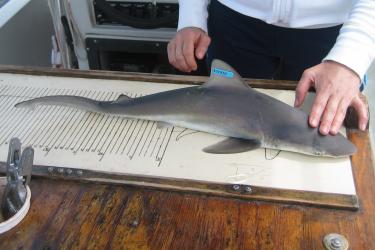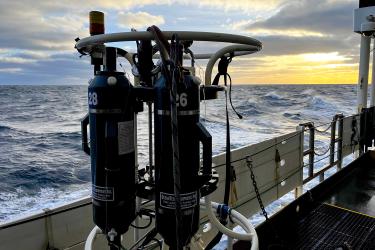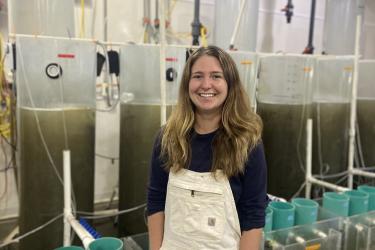There is a popular quotation among fisheries scientists by John Shepherd: “Counting fish is just like counting trees, except they’re invisible and they keep moving around.” It’s a great analogy, and a good illustration of why surveys are valuable for fisheries management. When scientists fish areas in a standardized way over many years, it gives us a way to keep a relative count of fish stocks over time, despite all the moving these “invisible” fish may do. When it comes to managing long-lived species like sharks, repeated surveying over the years can also be an opportunity to see repeat customers!
Three Decades of Shark Surveys
Since 1989, the Coastal Shark Bottom Longline Survey has fished for sharks along the Atlantic coast from Florida to Delaware. It tracks the population sizes of large coastal species, including sandbar, blacktip, tiger, and dusky sharks. We also use this survey as a platform to tag sharks with conventional tags as part of our Cooperative Shark Tagging Program. Tagging is a way for scientists to gain valuable information about:
- Movement patterns
- Stock boundaries
- Habitat use
- Growth
- Longevity
We collect data at the time a shark is tagged and again when it is recaptured. Over the 35-year history of this survey, our scientists have tagged more than 10,700 sharks and recaptured 271!
This year’s 47-day survey kicked off on April 8. On April 21, we added another record to this list: We recaptured a 178 centimeter sandbar shark off the coast of Georgia an amazing 23.75 years after it was first tagged! This now-mature female was originally tagged as a 43-centimeter pup in the nursery grounds of Delaware Bay as part of the Cooperative Atlantic States Shark Pupping and Nursery (COASTSPAN) survey. This recapture gives us a validated growth record spanning her entire lifespan. This is a rare and extremely valuable type of data point for life history studies of long-lived species.
Shark Researchers Are also Long-Lived!
As the new chief scientist of the Coastal Shark Bottom Longline Survey, seeing this long-term effort pay off makes me grateful for the scientists who cultivated these surveys over the years. Cami McCandless, lead for the Apex Predators Program and chief scientist of the Delaware Bay COASTSPAN survey, was actually the original tagger of our recaptured sandbar shark way back in 2000!
Another impressive fact: My predecessor, Lisa Natanson, helped design the current format of the Coastal Shark Bottom Longline survey. She has not missed a single set since 1996, even coming out of retirement this year to show me the ropes. Indeed, the true value of surveys lies in their longevity, and the same can be said for researchers, especially when studying fish with equally long lifespans. I am thankful anytime I am able to experience an “a-ha” moment in shark science, like we did with this long-term recapture. Years of hard work and the dedication of others make those moments possible. Surveys and the scientists who staff them are truly invaluable to fisheries management.







